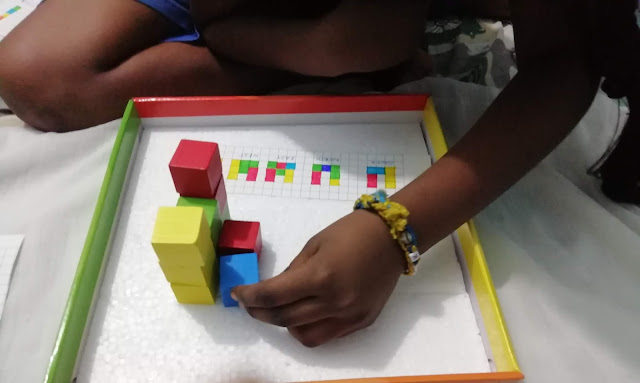We have been solving a lot of puzzles like this, which we
found in pinterest and face book pages and my little one likes to solve it. It
really helped her in learning algebra.
I don’t know why we hate algebra, when the pictures are replaced by the alphabets x,y….
I was thinking about introducing algebraic
equations to my daughter and started a conversation like this,
“When I have 2 stamps you have 4,
when I have 3 stamps you have 6,
when I have 4 stamps you have 8,
and when I have 5 stamps you have 10 ….”
She interrupted, “So, I have twice the stamps as that of you”
“Great, if I have x
number of stamps, how many will you have? Let us use ‘x’ instead of any
particular number. Ok”
“2x” she said.
“If I have x stamps and you have 3 more than that…”
“x+3”
“ if you have 2 fewer than mine”
“mm X-2”
That’s it. Now she knows how to write pre algebraic equation.
I gave these cards which I downloaded from
here to arrange the word phrases and the corresponding equations. She enjoyed it.
Once she was good at forming equations, we started a lesson
on how to solve it. I used very simple single
order expressions taken from Singapore primary questions.
Algebra tiles are
really helpful in the introductory stage and here are two sample problems.
The second problem



















































